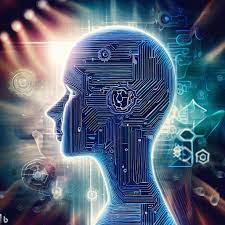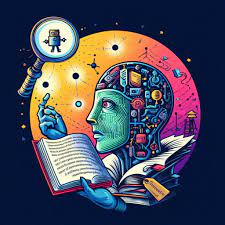Demystifying ChatGPT
Recognizing OpenAI's Linguistic Model
Over the past ten years, artificial intelligence (AI) has advanced significantly, with language models emerging as one of the field's most exciting developments. Of them, OpenAI's ChatGPT has attracted a lot of attention due to its capacity to produce language that resembles that of a human, respond to inquiries, and have meaningful dialogues. However, ChatGPT's fundamental ideas and workings can be rather complicated. By providing a thorough explanation of OpenAI's language model, its strengths, limitations, and future potential, this blog seeks to demystify ChatGPT.
UmaNg
- The Development of Linguistic Models
- Enter OpenAI's GPT Series
- Training for GPT-3 comprised two essential phases
- Limitations and Challenges
The Development of Linguistic Models
Understanding the evolution of language models is crucial to appreciating the significance of ChatGPT. A subtype of AI called language models is used to comprehend and produce human language. Because rule-based systems were unable to manage the subtleties and variety of real language, early models significantly depended on them.
Language processing underwent a radical change with the introduction of neural networks, especially deep learning. Vector representations of words were presented by models such as Word2Vec and GloVe, which captured semantic linkages. The capacity to simulate sequential data was further enhanced with the introduction of long short-term memory (LSTM) networks and recurrent neural networks (RNNs).
As described in the 2017 publication "Attention is All You Need" by Vaswani et al., a breakthrough was made with the introduction of the Transformer architecture. Transformers greatly improve text handling capabilities by handling long-range dependencies and contextual relationships by processing words in parallel using self-attention techniques.
Enter OpenAI's GPT Series
Building on the Transformer architecture, OpenAI's Generative Pre-trained Transformer (GPT) series broke new ground in natural language creation and understanding. The GPT models can acquire language patterns, grammar, and factual knowledge since they are trained using unsupervised learning on massive volumes of text data from the internet.
GPT-1 and GPT-2
With remarkable results, the initial iteration, GPT-1, introduced the idea of fine-tuning pre-trained language models on certain tasks. With 1.5 billion parameters, GPT-2, which was launched in 2019, dramatically increased the model's capabilities and demonstrated the promise of large-scale models. Its capacity to produce logical and contextually appropriate prose generated much discussion about the potential ramifications of such potent AI.
GPT-3: The Game Changer
The third and most sophisticated version, GPT-3, was made available in June 2020. GPT-3 showed remarkable language production and comprehension capabilities with an astounding 175 billion parameters. It could write essays, write code, write poetry, and respond to inquiries, among many other things, with only a little tweaking.
How GPT-3 Works
GPT-3 is essentially a deep neural network that has been trained on a variety of text samples. The architecture it employs is Transformer, with levels of self-attention processes. Through these methods, the model is able to capture contextual linkages and produce coherent replies by weighing the relevance of various terms in a phrase.
Training for GPT-3 comprised two essential phases
1. Prior to training
The model gains knowledge of linguistic structures and patterns by studying a vast corpus of literature. At this point, the model is able to produce writing that flows organically by anticipating the word that will come next in a sentence.
2. Adjusting
GPT-3 can be optimized on particular datasets in various applications to improve its performance on specific tasks. However, substantial fine-tuning is frequently unnecessary because of its zero-shot and few-shot learning capabilities.
Demystifying ChatGPT
A GPT-3 model variation designed specifically for conversational text generation is called ChatGPT. It is intended to have interactive conversations and respond with responses that are human-like depending on the input it gets. Let's examine each of ChatGPT's main features:
Understanding and Generating Natural Language
ChatGPT is very good at producing and comprehending human language. Its answers are intelligible and pertinent to the context, frequently emulating the tone and flow of spoken language. This capacity is the result of intensive training on a wide range of text data, including different writing styles, subjects, and domains.
Conversational Context
The ability of ChatGPT to preserve conversational context is one of its advantages. It may recall past exchanges within the same session, facilitating more conversational and contextualized exchanges. Applications such as virtual assistants, instructional tools, and customer assistance can greatly benefit from this functionality.
Versatility and Applications
Because of its adaptability, ChatGPT can be used for a variety of purposes:
Customer Support:
Human intervention is less necessary with ChatGPT's ability to manage consumer inquiries, offer information, and troubleshoot typical issues.
Content Creation:
ChatGPT offers advice and boosts productivity for writers, helping them with everything from email and article drafting to producing imaginative content like poems and stories.
Education:
As a tutor, ChatGPT can respond to inquiries from students, clarify ideas, and offer study aids.
Entertainment:
ChatGPT provides an innovative approach to connect with AI-driven content by including users in interactive storytelling, gaming, and other entertainment formats.


Limitations and Challenges
Although ChatGPT is an effective tool, it has many drawbacks and difficulties:
Bias and Fairness
Biases found in the training set are passed down to GPT-3, which includes ChatGPT. These prejudices may show up in the model's replies, which could produce results that are unfair or unsuitable. Although OpenAI has taken steps to reduce prejudice, it is still a problem.
Accuracy and Reliability
ChatGPT is not perfect, despite its excellent text generation capabilities. When answering unclear or complicated questions, the model may yield inaccurate or nonsensical results. When utilizing AI-generated content, users need to be cautious and double-check the facts.
Ethical Considerations
The use of strong language models gives rise to moral questions. Careful thought must be given to issues including false information, harmful use, and the possible effect on employment. In order to meet these issues, OpenAI is dedicated to responsible AI development and encourages openness and cooperation.
The Future of ChatGPT and AI Language Models
AI language models and ChatGPT have a bright future ahead of them. We may anticipate more developments in conversational AI, natural language creation, and understanding as research continues. Numerous domains exhibit significant promise:
Improved Contextual Understanding
Sophisticated and human-like interactions will result from improving language models' comprehension and retention of context throughout extended chats.
Multimodal Capabilities
AI systems that are more interactive and comprehensive will be made possible by integrating language models with other AI modalities like vision and audio. For instance, fusing image recognition and text production could improve applications such as instructional tools and virtual assistants.
Customization and Personalization
Creating techniques that allow users to alter and change language models will make them more useful and applicable in a variety of contexts. More interesting and productive user experiences will result from customizing AI responses to each person's tastes and demands.
Enhanced Bias Mitigation
AI systems that are more equitable and inclusive will benefit from ongoing research into bias identification and reduction. Biases in language models can be lessened by employing strategies like adversarial training and diverse data sources.
< b>Natural language processing and AI-driven dialogue have advanced significantly with the introduction of ChatGPT, an OpenAI-developed version of GPT-3. The power and promise of contemporary language models are demonstrated by their capacity to produce text that is human-like, comprehend context, and adjust to a variety of applications. But immense power also entails great responsibility. To guarantee that AI has a good social influence, issues including prejudice, accuracy, and ethical considerations must be addressed. The future of AI language models presents great opportunities for innovation, creativity, and improved human-AI connection as we continue to demystify and improve these technologies.

